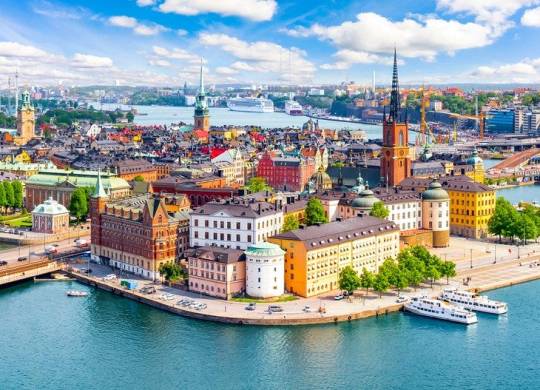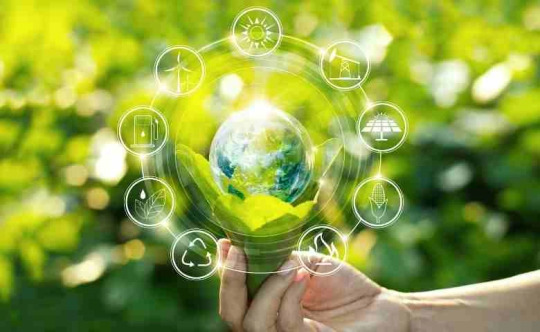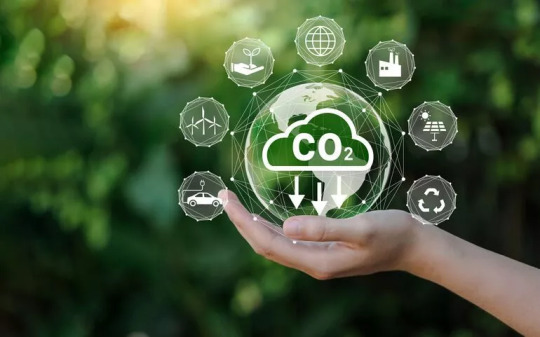#Carbon footprint calculation
Explore tagged Tumblr posts
Text
Top Countries Leading the Race towards Net Zero
A Closer Look at their Sustainable Development Goals
05 August, 2023
WOCE Team

As the world grapples with the urgent need to combat climate change, several countries have emerged as leaders in the race towards achieving net zero emissions. These forward-thinking nations have not only set ambitious targets to reduce greenhouse gas emissions, but they have also incorporated sustainable development goals into their strategies. In this article, we will take a closer look at the top countries leading the charge towards a sustainable future and examine how they are aligning their efforts with the United Nations’ Sustainable Development Goals (SDGs). From innovative renewable energy projects to transformative policies.
Join us as we delve into the strategies and initiatives of these trailblazing countries, highlighting their commitment to not only mitigating climate change but also fostering social and economic progress. Discover how these nations are redefining what it means to achieve net zero emissions and how their sustainable development goals are shaping their journey towards a more sustainable future.
Why net zero emissions are important for the environment
Net zero emissions refer to the balance between the amount of greenhouse gases emitted into the atmosphere and the amount removed or offset. Achieving net zero emissions is crucial to combating climate change and its devastating effects on the environment. By reducing greenhouse gas emissions to net zero, we can stabilize the global temperature increase and prevent catastrophic consequences such as extreme weather events, rising sea levels, and loss of biodiversity.
The transition to net zero emissions requires a holistic approach that encompasses various sectors such as energy, transportation, agriculture, and industry. It involves implementing renewable energy sources, improving energy efficiency, adopting sustainable land-use practices, and promoting circular economies. By embracing these strategies, countries can not only mitigate climate change but also create green jobs, enhance energy security, and improve public health.
The role of sustainable development goals in achieving net zero emissions
The United Nations’ Sustainable Development Goals (SDGs) provide a comprehensive framework for countries to address the interconnected challenges of sustainable development, including climate change. The SDGs consist of 17 goals, each with specific targets to be achieved by 2030. These goals encompass a wide range of issues, including poverty eradication, gender equality, clean energy, sustainable cities, and climate action.
In the context of achieving net zero emissions, sustainable development goals play a crucial role. They provide countries with a roadmap to integrate climate action into their overall development strategies. By aligning their efforts with the SDGs, countries can ensure that their transition to net zero emissions is socially inclusive, economically viable, and environmentally sustainable.
Exploring the top 5 countries leading the race to net zero emissions

1. Sweden
Sweden has emerged as a global leader in the race towards net zero emissions. With a strong commitment to sustainable development, this country has set ambitious targets to reduce greenhouse gas emissions and transition to renewable energy sources. Their sustainable development goals include achieving universal access to clean energy, promoting sustainable agriculture, and building resilient infrastructure.
To achieve these goals, Sweden has implemented various initiatives and policies, including:
1. Heavy investments in renewable energy projects, such as wind and solar farms.
2. Implementation of energy efficiency measures across different sectors.
3. Adoption of carbon pricing mechanisms to incentivize emission reductions and promote low-carbon technologies.
These efforts have led to significant outcomes:
1. Reduction of greenhouse gas emissions.
2. Creation of new job opportunities.
3. Stimulated economic growth.
2. Norway
Norway is another frontrunner in the race towards net zero emissions. They have recognized the importance of sustainable development and have integrated it into their national policies and strategies. Their sustainable development goals include promoting sustainable cities and communities, ensuring access to affordable and clean energy, and taking urgent action to combat climate change.
To achieve these goals, Norway has implemented a range of initiatives, including:
1. Investment in public transportation systems to diminish vehicle emissions.
2. Encouragement of electric vehicle use through incentives and infrastructure development.
3. Implementation of energy efficiency programs in buildings and industries, resulting in reduced energy and greenhouse gas emissions.
4. Active participation in international collaborations to share best practices and expedite the transition to a low-carbon economy.
3. Denmark
Denmark has demonstrated a strong commitment to sustainable development and has made significant progress towards achieving net zero emissions. Their sustainable development goals encompass a wide range of areas, including affordable and clean energy, sustainable consumption and production, and climate action.
To achieve these goals, Denmark has implemented innovative policies and initiatives, which include:
Renewable Energy Projects:
1. Investment in large-scale solar and wind farms.
2. Implementation of energy efficiency measures within buildings and industries.
Sustainable Land-Use Practices:
1. Adoption of reforestation and afforestation to absorb carbon dioxide from the atmosphere.
Positive Outcomes:
1. Reduction of greenhouse gas emissions.
2. Enhancement of energy security.
3. Improvement of air quality.
4. Switzerland
Switzerland has emerged as a leader in sustainable development and has made significant strides towards achieving net zero emissions. Their sustainable development goals include promoting sustainable economic growth, ensuring access to affordable and clean energy, and taking urgent action to combat climate change.
To achieve these goals, Switzerland has implemented transformative policies and initiatives, including:
Investment in Renewable Energy:
1. Emphasis on renewable energy sources like solar and wind power.
2. Implementation of energy efficiency measures within buildings and industries.
Sustainable Transportation Systems:
1. Promotion of electric vehicles.
2. Development of efficient public transportation networks.
Positive Outcomes:
1. Reduction of greenhouse gas emissions.
2. Creation of new job opportunities.
3. Stimulation of economic growth.
5. Austria
Austria is at the forefront of the race towards net zero emissions. Their sustainable development goals encompass a wide range of areas, including affordable and clean energy, sustainable cities and communities, and climate action.
To achieve these goals, Austria has implemented bold initiatives and policies, which include:
Investment in Renewable Energy:
1. Heavy investment in renewable energy projects, including offshore wind farms and solar power installations
Energy Efficiency Measures:
1. Implementation of energy efficiency measures across various sectors
2. Reduction of energy consumption and greenhouse gas emissions
Sustainable Transportation Systems:
1. Promotion of electric vehicles
2. Development of cycling infrastructure
Positive Outcomes:
1. Reduction of greenhouse gas emissions
2. Improvement of air quality
3. Enhancement of the quality of life for citizens
Key takeaways and lessons from the top country’s efforts

The efforts of the top countries leading the race to net zero emissions provide valuable lessons and insights for the global community. Firstly, their commitment to sustainable development goals has been instrumental in driving their transition to a low-carbon economy. By integrating climate action into their overall development strategies, these countries have ensured that their efforts are comprehensive and sustainable.
Secondly, international collaboration has played a crucial role in accelerating the transition to net zero emissions. The exchange of knowledge, best practices, and technologies has enabled countries to learn from each other and implement effective strategies. It is essential for countries to collaborate and support each other in achieving their sustainable development goals and mitigating climate change.
Lastly, the top countries’ efforts have demonstrated that achieving net zero emissions is not only crucial for the environment but also beneficial for social and economic progress. The transition to a low-carbon economy has created new job opportunities, enhanced energy security, and improved public health. It is a win-win situation that enables countries to address climate change while fostering sustainable development.
The importance of international collaboration for achieving net zero emissions
The transition to net zero emissions requires global cooperation and collaboration. No single country can achieve this goal alone. It is crucial for countries to work together, share knowledge and resources, and support each other in their efforts to mitigate climate change.
International collaboration can take various forms, including sharing best practices, technology transfer, financial support, and capacity building. By collaborating, countries can accelerate the transition to a low-carbon economy and achieve their sustainable development goals more effectively.
Furthermore, international collaboration can foster innovation and drive the development of new technologies and solutions. By pooling resources and expertise, countries can overcome common challenges and find innovative solutions to mitigate climate change.
Conclusion: The future of net zero emissions and sustainable development goals
The top countries leading the race to net zero emissions have shown that achieving this goal is not only possible but also beneficial for social, economic, and environmental progress. Their efforts to align with the United Nations’ Sustainable Development Goals have ensured that their transition to a low-carbon economy is holistic and inclusive.
As the world faces the urgent need to combat climate change, it is crucial for more countries to follow in the footsteps of these trailblazing nations. By setting ambitious targets, implementing transformative policies, and collaborating internationally, countries can pave the way for a greener and more sustainable future.
The journey towards net zero emissions and the achievement of sustainable development goals requires collective action and a commitment to long-term change. By working together, countries can create a world where economic prosperity and environmental sustainability go hand in hand. It is up to us to make the necessary changes and build a better future for generations to come.
#10 simple ways to reduce your carbon footprint#co2 emissions#carbon footprint calculation#carbon footprint#carbon credit price today in india#sustainability reporting#net zero emissions
0 notes
Text
when i was in a level psychology my teacher once asked my class how long we thought we had left before our species went extinct. most of us gave variations in the realm of thousands of years, but my friend said it would be within this century. when we asked her why she just said 'idk i just don't think we're going to last much longer' and we all laughed it off and said she was just being pessimistic. but now i see the way the world is absolutely refusing to respond to climate change the way it needs to and i think she was right.
#i am a sustainability consultant#i calculate carbon footprint#develop net zero strategies#put together impact assessments related to climate change#ive had clients tell us that they literally don't care about reducing their carbon footprint#ive had clients saying that the board doesnt want to approve the funding needed for the interventions we've recommended#ive had clients who very clearly only care about their project so far as it ticks a box#it's so demoralising#climate change
13 notes
·
View notes
Text
saw someone recommending an environmentalism app that will 'really help you make good choices and has lots of good info' and i was like hm. well maybe there's something new on there. im vaguely curious.
first thing it hits me in the face with is uwu take five minute showers
#i was hoping like 'if u have to purchase plastic this is the least harmful shit' not. this goddamn nonsense#if u ask me to calculate my carbon footprint im throwing u out the door#gigi.txt#this is not how it WORKS like on one hand i hate the ppl who are like uwuuwuwu well its the big corporATIONS ruining everything#and its like. i mean yeah. but your lifestyle will have to drastically change u realize that like the western hyperconsumerism that happens#will. need to change.#i mentioned to my sister once that u should wear each item of clothing 30 times and she laughed and was like 'thats so unreasonable'#'i could never do that for a lot of my clothes' okay stop fucking buying more then#but on the other hand the ppl who act like if everyone 'reduces their carbon footprint!!!' and 'takes shorter showers!!!' and shit like#thats not gonna fucking save us. are u joking.#im gonna go read some fucking naomi klein
4 notes
·
View notes
Text
wait what
Yes, the military employs about 3 million people and yes if you average the numbers out Taylor puts out more CO2 than any one of them. But averages aren't always a valid representation of statistics. The vast majority of military servicemembers don't have any connection to whatever apparati are involved in the military's CO2 production. They're mainly office workers who produce no more emissions than you or I when they, idk, drive to work (not to mention the 3 million number includes civilian contractors who don't do anything for the military that they wouldn't do for any other employer). The average non-military person puts out about 14-15 tons of CO2 per year, which is pretty close to that 17 number. So if we're just going by the average person there isn't much statistical significance to compare Taylor to people in the military vs just regular people. Coca-Cola puts out about 5.5 million tons of CO2 per year and employs roughly 80,000 people, so by average we can determine that any given Coca-Cola employee emits 68.75 tons of CO2 per year, or about 4 times the average military employee (or 0.83 Taylor Swifts). It would make more sense to say "Taylor Swift emits as much CO2 as 12 F-35 jets" or whatever
The US military emitted 640 times as much CO2 as Taylor Swift last year
#because this is the piss on the poor website: this isn't a defense of the military or Taylor#it's just weird to use averages in this way and calculating the emissions of random military people veers dangerously close to#“carbon footprint” bullshit#like I'm sure even that 14-15 tons number I quoted is just an average. it seems way to high for normal people#if you add up all the emissions produced by the US and divide it by 330 million people it'd seem like we each produce a lot!#but that's not how this works. the production is concentrated in the hands of a few. yeah Taylor is one of those few#but using averages flattens whatever distribution you would see if you looked at the actual numbers#the military burning hundreds of gallons of jet fuel for Blue Angels demos are the problem#Sergeant Davis driving to Ft Meade to stand in a doorway for 10 hours isn't the problem (or. not as much of a problem. you know what I mean)
13K notes
·
View notes
Text
HCCB - What is Carbon Footprint - Know How to Reduce Carbon Footprint
Know how to calculate & reduce carbon footprint. Explore HCCB's commitment to achieving net zero emissions & effective strategies for reducing carbon footprint. https://www.hccb.in/blog/csr-stories/what-is-carbon-footprint
#what-is-carbon-footprint#reducing-carbon-footprint#net-zero#calculate-footprint-carbon#net-zero-emissions
0 notes
Text
CarbonClick

CarbonClick enables businesses and their clientele to mitigate carbon emissions effectively through straightforward, impactful, and transparent carbon offsetting solutions. With CarbonClick, enterprises can enhance their sustainability endeavors and contribute positively to environmental conservation. Trusted by more than 1,100 brands worldwide, CarbonClick holds certification as a B Corp, ensuring adherence to rigorous criteria for social and environmental responsibility.
Visit Our Website
0 notes
Text
Practical Sustainability: Real-World Examples of Carbon Footprint Analysis for Small and Medium-Sized Businesses (SMBs)

In the realm of sustainability, small and medium-sized businesses (SMBs) play a crucial role in driving positive environmental change. This blog post sheds light on practical examples of carbon footprint analysis tailored specifically for SMBs. By exploring these real-world scenarios, smaller enterprises can glean insights into actionable steps toward a more sustainable and eco-conscious business model.
1. Office Operations: Carbon Footprint of Everyday Activities
Scenario:
An SMB with a central office space aims to assess the carbon footprint associated with its daily operations.
Carbon Footprint Analysis:
Energy Consumption: Evaluate electricity and heating/cooling usage.
Transportation: Assess emissions from employee commuting and business travel.
Waste Management: Examine the environmental impact of waste disposal.
Insights and Actions for SMBs:
Remote Work Policies: Encourage remote work to reduce office energy consumption.
Sustainable Commuting: Promote eco-friendly commuting options for employees.
Waste Reduction: Implement recycling initiatives and reduce single-use items.
2. Retail Business: Carbon Footprint of Product Shipping
Scenario:
An SMB operating an online retail business wants to understand the carbon footprint associated with product shipping.
Carbon Footprint Analysis:
Logistics: Assess emissions from shipping carriers and transportation methods.
Packaging: Examine the environmental impact of packaging materials.
Last-Mile Delivery: Evaluate emissions from the final leg of the delivery process.
Insights and Actions for SMBs:
Eco-Friendly Packaging: Opt for sustainable and minimalistic packaging.
Local Sourcing: Consider sourcing products locally to reduce transportation emissions.
Consolidated Shipping: Implement strategies for consolidated and efficient shipping.
3. Manufacturing Workshop: Carbon Footprint of Production Processes
Scenario:
A small manufacturing workshop wants to analyze the carbon footprint associated with its production processes.
Carbon Footprint Analysis:
Raw Materials: Assess emissions from raw material extraction and transportation.
Manufacturing Equipment: Evaluate energy consumption during production.
Waste Generation: Examine emissions related to waste disposal.
Insights and Actions for SMBs:
Sustainable Materials: Source materials with lower environmental impact.
Energy-Efficient Practices: Adopt energy-efficient machinery and practices.
Waste Reduction: Implement recycling programs and reduce production waste.(Read More…)
0 notes
Text
CarbonClick

CarbonClick enables businesses and their clientele to mitigate carbon emissions effectively through straightforward, impactful, and transparent carbon offsetting solutions. With CarbonClick, enterprises can enhance their sustainability endeavors and contribute positively to environmental conservation. Trusted by more than 1,100 brands worldwide, CarbonClick holds certification as a B Corp, ensuring adherence to rigorous criteria for social and environmental responsibility.
Visit Our Website
#carbon footprint calculator#carbon offsets#carbon offset#carbon offsetting#carbon calculator#calculate your carbon footprint#carbon footprint calculators#purchase carbon offsets
0 notes
Text
0 notes
Text
10 Easy Ways to Reduce Your Carbon Footprint
Make a Positive Impact on Climate Change
10 August, 2023
WOCE Team

Are you looking for simple ways to combat climate change and reduce your carbon footprint? Look no further! In this article, we have compiled a list of 10 easy and effective strategies that you can implement in your daily life to make a positive impact on our planet.
With the growing concern over the environment, it's essential that we all take responsibility for our actions and make sustainable choices. From reducing energy consumption and embracing renewable energy sources to conserving water and practicing mindful consumption, there are numerous ways we can contribute to a greener future.
By incorporating these easy-to-follow tips into your routine, you'll not only be helping to combat climate change but also saving money and leading a healthier lifestyle. So, whether you're a seasoned environmentalist or just starting your eco-friendly journey, this article is filled with practical advice and actionable steps that anyone can take.
Start making a difference today by reducing your carbon footprint and creating positive change for the planet. Together, we can build a sustainable future for generations to come.
The Importance of Reducing Carbon Footprint

Reducing our carbon footprint is not only essential for the environment but also for our own well-being. By making sustainable choices, we can save money, improve air quality, and foster a healthier lifestyle. Additionally, taking action to reduce our carbon emissions sends a powerful message to policymakers and corporations, urging them to prioritize environmental sustainability.
Simple Lifestyle Changes to Reduce Carbon Footprint
1. Embrace a plant-based diet: The food industry is a significant contributor to greenhouse gas emissions. By reducing our consumption of meat and dairy products, we can significantly reduce our carbon footprint. Plant-based alternatives not only have a lower environmental impact but are also healthier for us.
2. Reduce, reuse, recycle: The mantra of waste management still holds true. By reducing the amount of waste we generate, reusing items whenever possible, and recycling materials, we can conserve resources and minimize the emissions associated with waste disposal.
3. Conserve energy at home: Simple actions like turning off lights when leaving a room, unplugging electronics when not in use, and using energy-efficient appliances can make a significant difference. Additionally, insulating your home and using natural lighting can help reduce energy consumption.
Energy-Efficient Practices at Home
4. Upgrade to LED lighting: LED bulbs are not only more energy-efficient but also last longer than traditional incandescent bulbs. By making this switch, you can save money on your energy bills and reduce your carbon footprint.
5. Optimize heating and cooling: Proper insulation, sealing gaps, and using programmable thermostats can help regulate indoor temperatures efficiently. Lowering the thermostat by just a few degrees during winter and raising it during summer can result in significant energy savings.
6. Use energy-efficient appliances: When purchasing new appliances, look for the Energy Star label. These appliances are designed to consume less energy without compromising performance.
Sustainable Transportation Options
7. Choose public transportation: Opting for public transportation, such as buses, trains, or trams, can significantly reduce your carbon emissions. If public transport is not accessible, carpooling or ride-sharing apps can be eco-friendly alternatives.
8. Walk or bike: For short distances, consider walking or biking instead of driving. Not only will you reduce your carbon footprint, but you'll also improve your health and fitness.
9. Invest in electric vehicles: If you're in the market for a new car, consider purchasing an electric vehicle (EV) or a hybrid. EVs produce zero tailpipe emissions and are becoming increasingly accessible and affordable.
Recycling and Waste Management
10. Follow proper recycling practices: Educate yourself on what can and cannot be recycled in your area. Rinse containers, separate recyclables, and dispose of hazardous waste responsibly. Remember, recycling is not a cure-all, so reducing and reusing should always be the first priority.
Conserving Water and Reducing Water Footprint
11. Fix leaks: A dripping faucet or a leaking pipe may seem insignificant, but they can waste hundreds of gallons of water every month. Regularly check for leaks and fix them promptly.
12. Install water-efficient fixtures: Install low-flow showerheads, faucets, and toilets to reduce water usage. These fixtures can significantly lower your water bills and conserve this precious resource.
Supporting Renewable Energy Sources
14. Switch to renewable energy: Consider installing solar panels on your property to generate clean, renewable energy. If that's not possible, explore options to purchase renewable energy from your utility provider.
15. Support renewable energy initiatives: Advocate for renewable energy policies and support organizations and businesses that prioritize clean energy. Encourage your local community to invest in wind, solar, and hydroelectric projects.
Advocating for Climate Action
16. Stay informed: Keep up-to-date with the latest climate change research and news. Educate yourself and engage in conversations about climate change with friends, family, and colleagues.
17. Vote for climate-conscious leaders: Support political candidates who prioritize climate change and have a history of advocating for environmental policies. Use your vote to influence climate action.
18. Join or support environmental organizations: Get involved with local environmental organizations and contribute your time, skills, or donations. These organizations play a crucial role in promoting sustainability and driving change.
13. Collect rainwater: Installing a rain barrel to collect rainwater can be used for watering plants or washing your car. This simple practice can help reduce strain on municipal water supplies.
Conclusion: Taking Action for a Sustainable Future

By implementing these 10 easy ways to reduce your carbon footprint, you can make a positive impact on climate change. Remember, every action counts, no matter how small. Whether it's adopting a plant-based diet, conserving energy at home, or supporting renewable energy sources, each step towards sustainability contributes to a brighter and greener future for all.
Start making a difference today and inspire others to join you on this crucial journey towards a sustainable future. Together, we can create a world where future generations can thrive in harmony with nature. Let's reduce our carbon footprint and make a positive impact on climate change!
#10 simple ways to reduce your carbon footprint#co2 emissions#carbon footprint calculation#carbon footprint#carbon credit price today in india#sustainability reporting#net zero emissions
0 notes
Text
What’s the Environmental Impact of Your Website?
New Post has been published on https://thedigitalinsider.com/whats-the-environmental-impact-of-your-website/
What’s the Environmental Impact of Your Website?
The web was once commonly thought to be a “green” platform. That makes sense, given the times. Electronic documents weren’t as popular. Using a website could save lots of printer paper and ink.
Yes, websites often eliminate the need for physical copies of documents. But there was much we didn’t consider in those days.
We didn’t think about massive server farms and the electricity required to run them. Nor did we consider the resources needed to load every image, video, and passage of text in a browser. And what about the costs associated with creating content?
Websites have an impact on our environment. Every site is an offender to some degree. The good news is that we can always do better.
Let’s examine the relationship between the web and the planet. Along the way, we’ll show you how to measure your website’s impact. And we’ll offer tips for reducing its carbon footprint.
The Web Designer’s Toolbox
Unlimited Downloads: HTML & Bootstrap Templates, WordPress Themes & Plugins, and much, much more!
The Importance of Sustainable Web Design
Web design is a multifaceted process. We create beautiful user interfaces. But there are other areas of focus. Websites also need to be usable and accessible.
We should now add sustainability to the equation. The world has moved online. Power consumption continues to grow. Thus, it’s worth considering how our decisions impact the environment.
Sustainable web design may sound scary – like it will require drastic measures. Eliminating the use of images due to their carbon footprint, for example. However, it may be more familiar than we think.
Sustainability and performance can go hand-in-hand. Performant practices can also be a win for the planet. It stands to reason that a page that loads quickly will also require fewer resources.
There are areas where the two may diverge, though. Web hosting is a prime example. Using a beefed-up server benefits performance. But that also comes with higher energy usage.
The path to being gentler on Mother Earth isn’t always a straight line. Doing right by your clients and the environment takes careful thought. Web designers must now view these processes through a different lens.
Perhaps you’re now wondering about your website’s environmental impact. So, how can you measure it?
Several web applications are available to help. We’ll choose Website Carbon Calculator for our example. The service has developed a methodology for calculating a site’s carbon footprint.
It measures the amount of site data, energy source, and related metrics. From there, you’ll receive a score based on this formula.
Enter your URL into the calculator and see where your website ranks. The results offer usage examples based on the number of monthly pageviews.
For instance, you’ll see how many trees it takes to absorb the carbon from your website. Or how far an electric vehicle can travel on the energy used. You can change the monthly pageviews to see how it impacts the resources required.
The numbers provided may not be exact. It does offer a glimpse of how eco-friendly your website is (or isn’t), though. You’ll have a better idea if you’re on the right path.
We hope your website scored well! If not, that’s OK. That means there is plenty of room for improvement. And you’ll find quite a few places to look.
Here are a few ways you can reduce your website’s carbon footprint.
Use an Environmentally Friendly Web Host
No two web hosts are the same. And that includes their sustainability policies.
Website Carbon Calculator takes this into account when testing your website. You receive a higher score if your host uses “green” energy or carbon offsets. For reference, you can find this data on The Green Web Directory.
Yes, changing hosts can be a pain. However, switching to an environmentally conscious provider might be worth it. You’ll be rewarding them for their efforts. And it’s something you can promote to clients.
Clean Up Your CSS & JavaScript
Websites can become bloated with CSS and JavaScript. Unused styles and scripts eat up precious resources. They’ll slow you down and place an extra strain on your server.
Here’s where performance and sustainability intersect. Loading only the necessary items improves both areas.
Your browser’s developer tools can help. They’ll allow you to assess each page load. From there, you can eliminate anything that isn’t needed.
Optimize Your Site’s Media
Your site’s images, audio, and video are ripe for optimization. And a little effort here can go a long way.
Make sure to use the latest codecs and formats. For example, WebP images can save space while maintaining quality.
It may not seem like much on a per-file basis. But saving a few kilobytes (KB) here and there adds up. You’ll use less bandwidth, less energy, and increase performance.
You might also consider efficiencies like content delivery networks (CDN). Or by hosting your videos on a service like Vimeo or YouTube. These providers fine-tune their servers for specific tasks. All while removing the burden from your web host.
Inspect Your Custom Code
Inefficient code can be costly. It may result in extra hits to your site’s database. Or require more CPU cycles to run. You could also chew up your server’s available memory.
All of this leads to more power consumption. The good news is that there are opportunities to trim the fat.
Spend some time reviewing any code you’ve written. Ensure that it runs as needed and that it does so efficiently. Run performance tests to gauge the effectiveness of your changes.
Third-party code might also be an issue. WordPress plugins can be a culprit. Use software that is actively maintained and supported. Remove or replace anything that’s hurting performance.
Get a Handle on Bot Traffic
Bots from search engines and other services visit your site often. Perhaps more than you might imagine. And that’s not counting the many brute-force attempts from malicious actors.
However, most websites don’t benefit from frequent bot traffic. It’s likely overkill unless your content is frequently updated.
All of this adds up to more carbon emissions. But it’s possible to keep these bots at bay.
WordPress users can turn to the Yoast SEO plugin. Its crawl optimization features allow you to reduce bot traffic. It’s an easy way to turn off features that you aren’t using.
There are other options. A CDN can help you limit bot traffic. Use security apps to ban hackers. And you can still use a robots.txt file to create custom indexing rules.
Small Steps to Creating a Greener Web
Every website we build has a carbon footprint. The worst offenders tend to be outdated websites and those with sloppy code. However, using modern best practices can make a world of difference.
Going further, consider the environmental cost of your design decisions. That means you’ll be building a greener website from the start.
You’ll not only reduce the emissions produced by your site. You might also save some money and improve the user experience.
So, take a moment to measure your site’s environmental impact. Then, look for areas of improvement. The steps you take will benefit everyone.
Related Topics
Top
#amp#applications#apps#audio#Bootstrap#bot#bot traffic#bots#browser#Building#calculator#carbon#carbon emissions#carbon footprint#cdn#change#code#content#cpu#CSS#data#Database#Design#designers#Developer#earth#easy#electricity#electronic#Emissions
0 notes